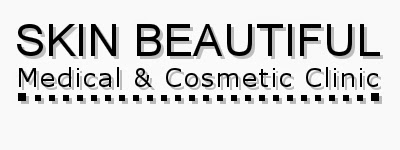Good practice begins with a proper consultation. How should cosmetic consulting for Botox & dermal fillers be done correctly?
Skin Beautiful Medical and Cosmetic Clinic provides expert advanced dermal filler treatments at clinics in Exeter Milton Keynes Bristol Coventry Swansea Warwick Daventry Evesham Carmarthen Llanelli and Neath.
Judging your practitioner
Before you agree to an expensive Botox or dermal filler treatment it's important to know that your practitioner is knowledgeable in the procedure and in the products being injected (implanted) into the skin.The right time and place to judge the level of competence of the practitioner is during the consultation. There are a few basic principles that simply must be adhered to. As a client you are paying not only for a cosmetic Botox or dermal fillers treatment, but also for the expert advice of the practitioner.
Obtaining informed consent
Consultations should be extensive. So much so, in fact, that the treatment time should equate to only a fraction of the total appointment time. Any practitioner offering a cheek augmentation or lip enhancement in 30 minutes cannot possibly be performing an appropriate consultation. Consultations should begin with a discussion about your expectation(s) to include treatment options and information about those treatments including types of products, their properties and limitations.If a practitioner cannot explain these basic principles then it is likely that the client will be left not fully understanding the proposed treatment. By explaining everything about the proposed treatment, the products involved and client expectations the client can then give informed consent. That is, the client should be empowered by knowledge to make the right choice about any proposed treatments.
Questions to ask your practitioner
In order to determine practitioner knowledge and competence first research information on the proposed treatments. A good place to begin is the website(s) of the manufacturer of the Botox or dermal filler. Here you can learn about product properties, limitations, longevity and possible side effects. This is a good way to help determine your own expectations based on product knowledge. Then during consultation ask your practitioner the following:- Which treatment is best for my condition?
- Which product(s) will you use and why?
- How does the product work?
- How long can I expect it to last?
- Can I see your aesthetics qualifications?
- How many times have you performed this procedure?
- Can I see evidence of your work (e.g. images)
About before and after images
Many clinics promote before and after images including our own. Whilst I see nothing wrong with displaying genuine images it is extremely important that the practitioner explains the context of these images. That is, the images demonstrate the potential of the product and do not guarantee every client will look exactly as in the after image following a single treatment. I always use my own before and after images where possible. I believe it demonstrates my ability and understanding of a particular procedure more so than giving a false impression of outcome. For example, if I am explaining the intricate procedure of lip contouring to a client then it is helpful to point to an image of a treatment I performed to facilitate this understanding to the client. Generic before and after images do not portray this same understanding and do nothing to demonstrate the practitioner's ability to perfirm the procedure correctly.What else should a good consultation offer?
A good consultation must also include a complete overview of medical history, lifestyle and assessment of the appropriateness of a cosmetic treatment. This information must be conveyed back to the client too.Above all, a consultation should allow you, the client to ask a series of questions so that you are happy you have sufficient knowledge to decide whether to proceed with the proposed treatment. Clients should never enter into an agreement for a treatment blindly, putting all faith and trust into the practitioner that the outcome will be OK. This does not demonstrate informed consent.
Blog author: Helen Bowes RGN, BSc (hons), AMAP, BACN
Helen Bowes is a registered general nurse with advanced training and qualification in Botox and dermal fillers procedures. Helen holds regular clinics for Botox and dermal fillers treatments at Skin Beautiful Medical and Cosmetic Clinic throughout England and Wales.
Useful links:
Skin Beautiful Medical & Cosmetic Clinic
About Helen Bowes RGN, BSc (hons), AMAP
About Botox (Botulinum toxin type A)
About dermal fillers
Botox & dermal fillers treatments
Read all our Botox & dermal fillers blogs here
Like us on Facebook
Follow us on Twitter
Skin Beautiful on LinkedIN
Subscribe to our YouTube channel

Thank you to all for the dozens of comments received for this article.
ReplyDeleteUnfortunately, many comments do not relate the the subject being discussed. In some instances other clinics have used this blog quite blatantly to promote their own businesses in a way that does not relate even remotely to the content of the article.
Our webmaster will not allow these kind of comments and will remove them straight away.
If you want your comments to appear here as part of a discussion then please do not insert hyperlinks with keywords back to your own clinic/practice.
Helen Bowes
Skin Beautiful Medical & Cosmetic Clinic